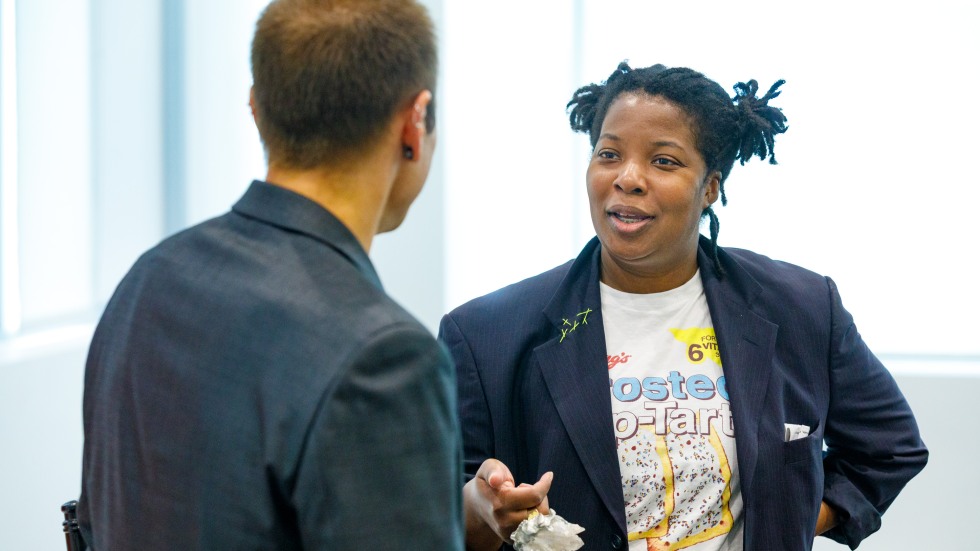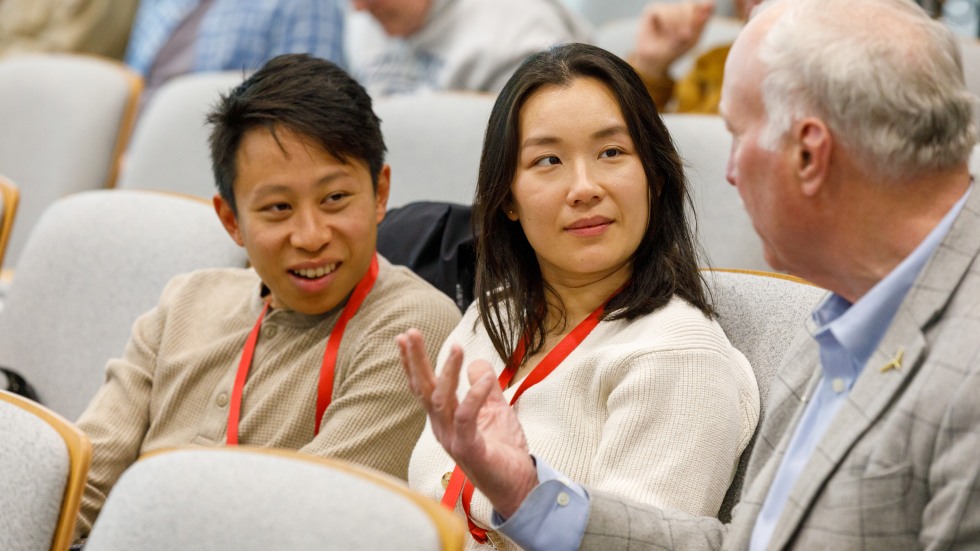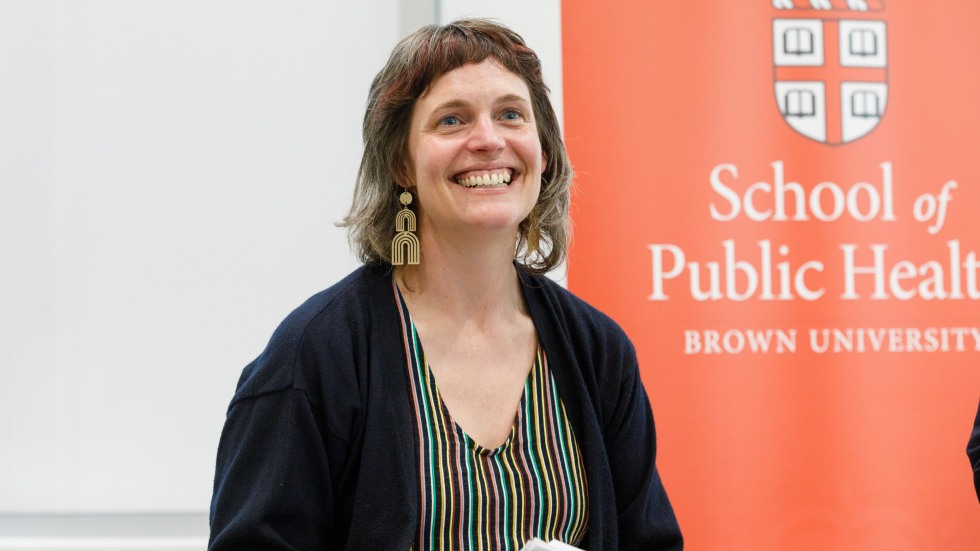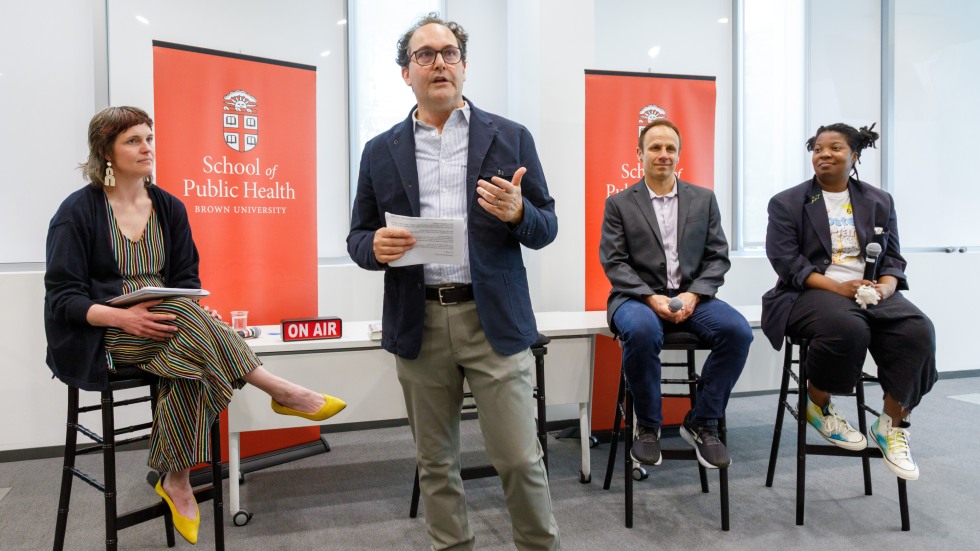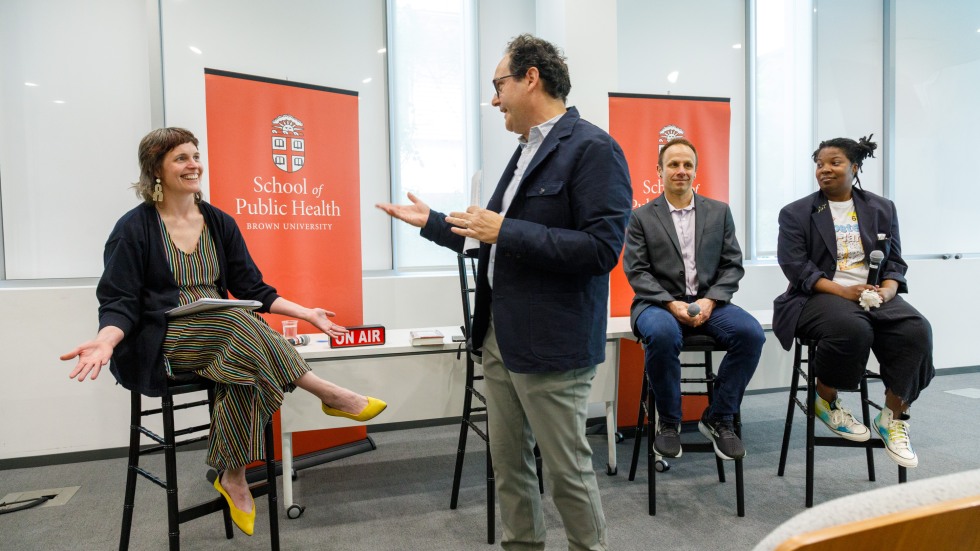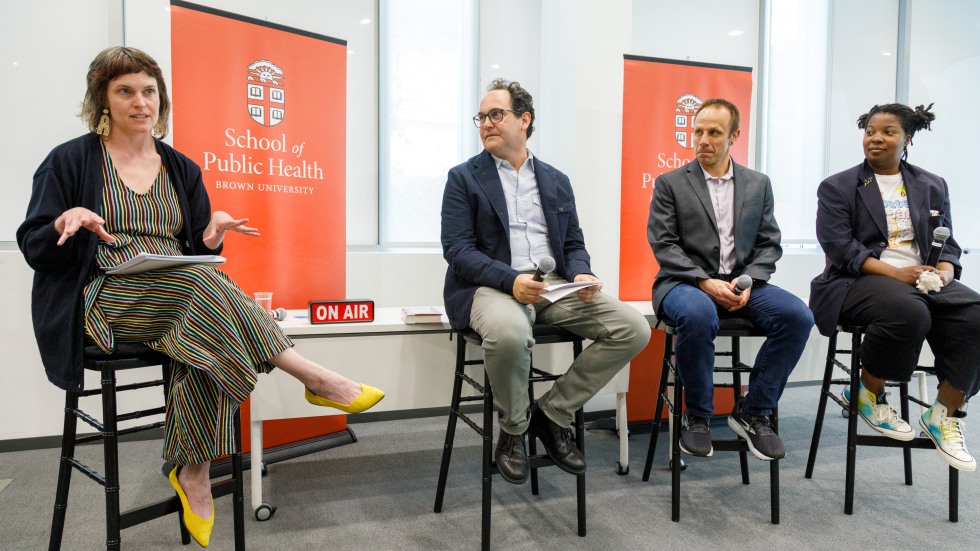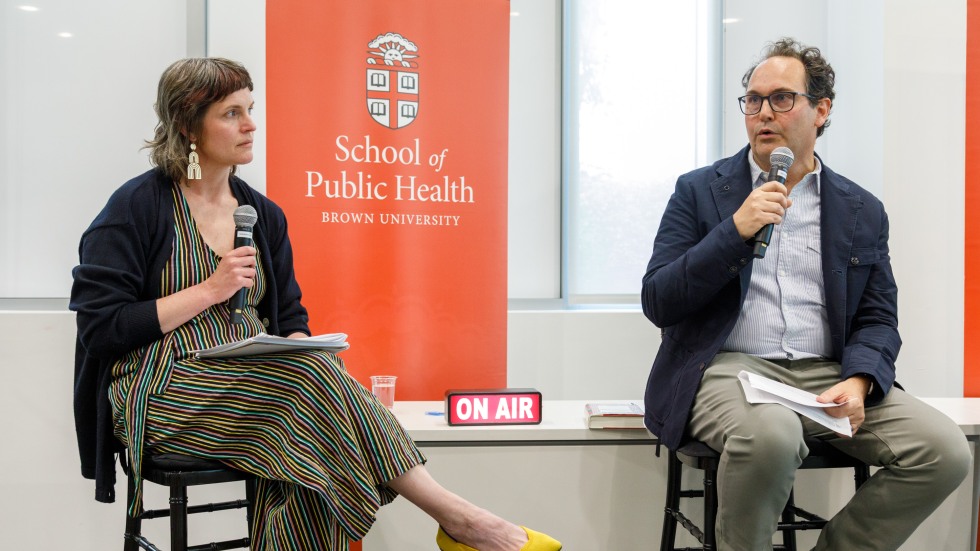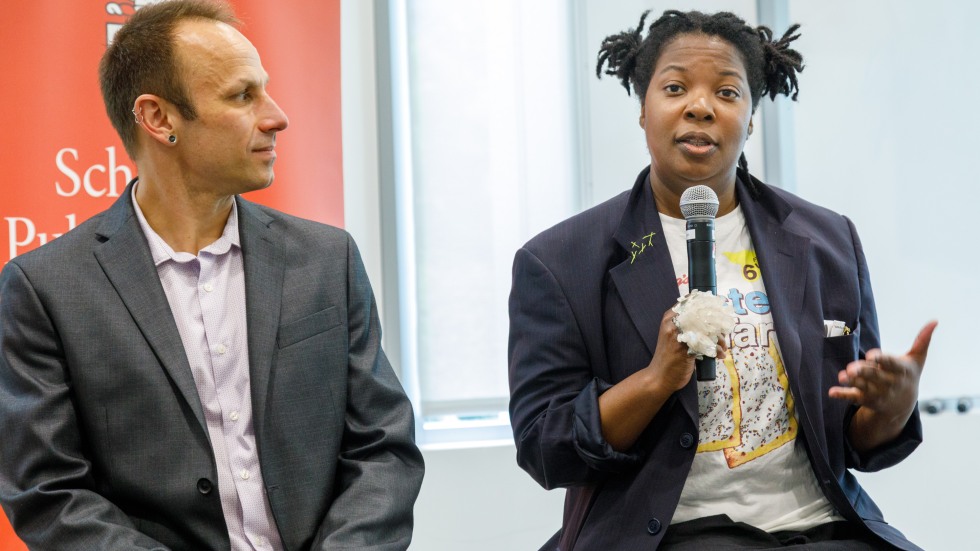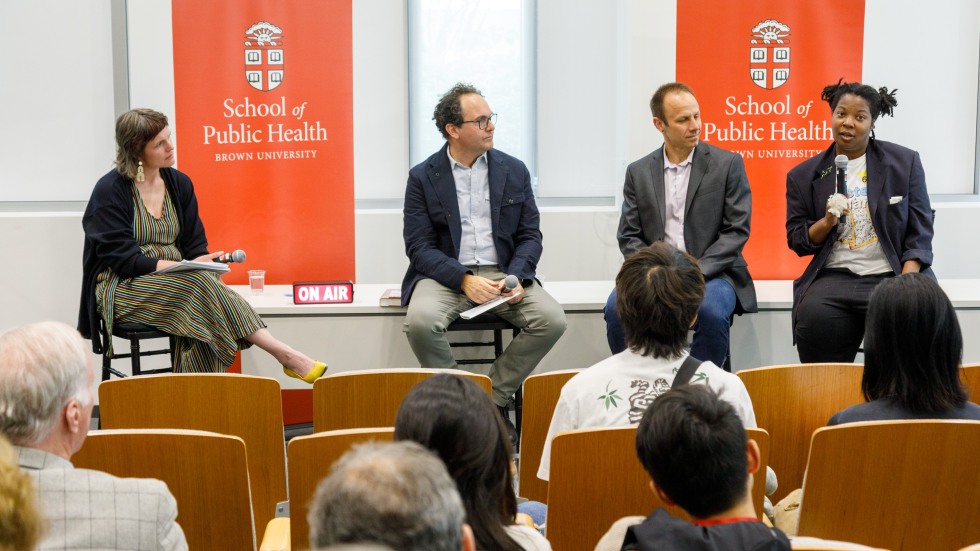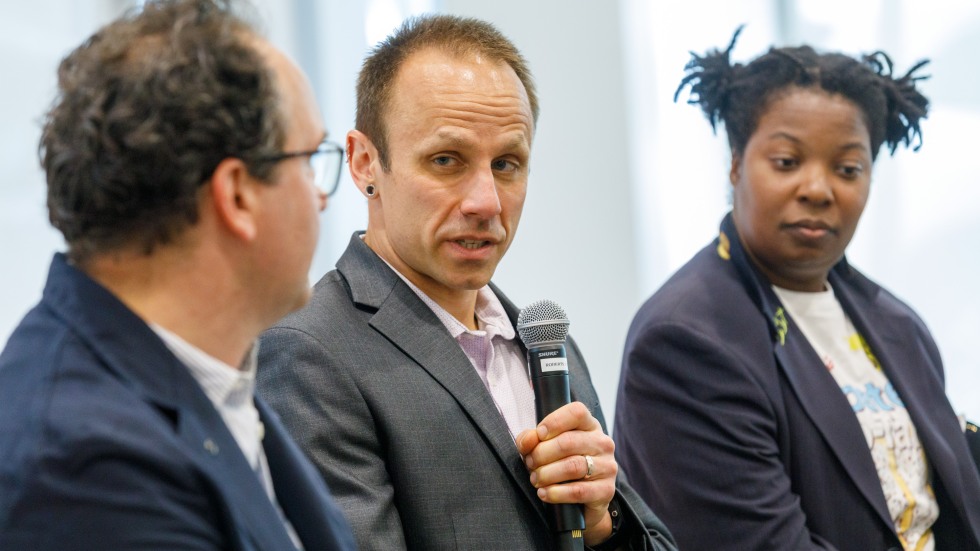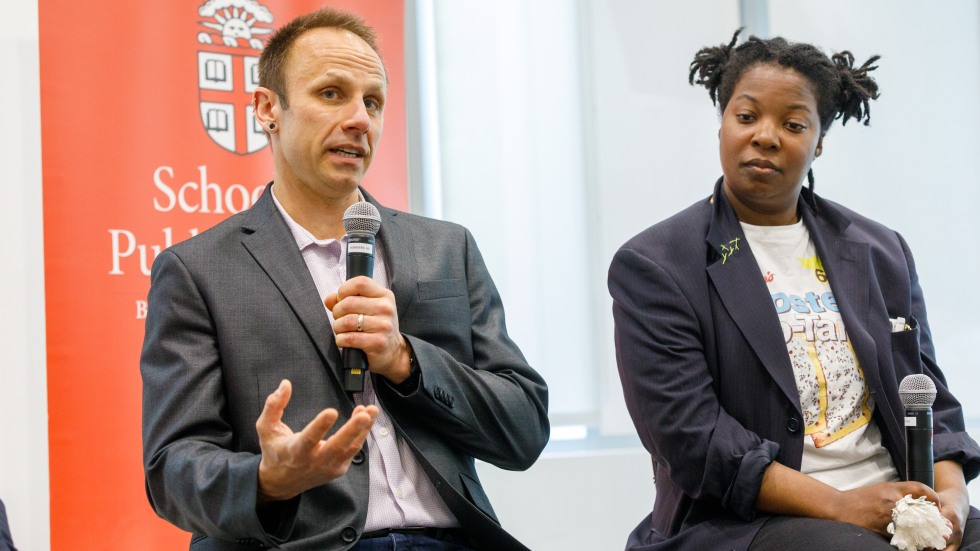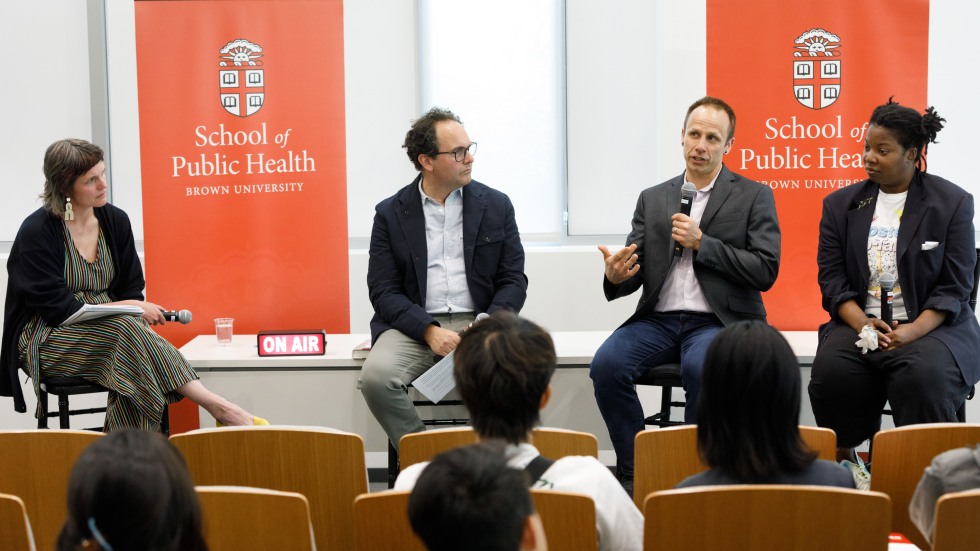Hall: So we're going to talk about the idealistic part of that quote, which was that cities are places where we can find solutions to problems. And Erica, I know that you're feeling bitter and there's so many examples of problems that have not been solved for generations and generations, but you have been doing a lot of important work. Can you point to some places where you're seeing solutions or bright spots?
Walker: No. (audience laughter) I'm just kidding. Two things: I feel like I work in communities every day that are organizing, that are trying to solve problems that may seem small to us, but are very important to them. For them it may mean life and death, and I work with wonderful faculty that are helping to find solutions for this problem. So, yes, absolutely, many of us at Brown are also working on those problems. And I'm very thankful to be in a department where I feel like there are like-minded people who can help me to direct my bitterness towards action.
Second, I am concerned that cities’ dysfunction is now bleeding into rural communities. And I think that that's something that we need to be on the lookout for.
Hall: Where are you seeing that? Can you give some specific examples?
Walker: A wood pellet plant: it’s not going to set up shop on the East Side of Providence because there's going to be an active and strong voice against it. So where are they going to go?
They're going to go to communities where there are very few people that are going to say anything, and they're going to be blinded by the economic activity, and they're going to say yes, without carefully weighing out the environmental health harms that could come as a result of that.
So not only have we not solved problems in cities, we are outsourcing our dysfunction to rural communities and disrupting their quiet, calm way of life.
I would like to add, especially to the people that are graduating today, don't be like us. Don't just sit up here and talk about the problems and talk about and intellectualize the problems. Actually use your degree. You've been well trained to actually go out, identify problems and work on them and solve them. Please don't be like us. Please don't be sitting up here on a panel talking about them. Get out in the communities and solve them. That would be my response.
Hall: I would say to be fair, though, that a lot of people would want to be like you because you are doing the work in the communities.
Walker: I'm bitter. Nobody wants to be around bitter people. (audience laughter)
Hall: Let's not discount the important work that you've already done, and we're going to talk more specifics about Providence, but you're not just somebody that's up here talking – I know for sure.
Joe, you’ve touched on how we’re trying to solve these problems in cities. Can you give more specific examples of how these issues show up in larger communities—and how, in some cases, greater resources make them easier to address?
Braun: Yes, I think there are examples when we can really leverage the partnerships we have between universities and then turn that into action.
We’ve done a lot of work around air filtration—using DIY air filters to reduce exposure to pollutants and respiratory viruses. Now, through our research center, we’re working to translate that into policy by advocating for better indoor air quality standards in schools at the state level.
This feels like a natural partnership between institutions like Brown, local cities and school districts. And we’re already seeing momentum: there have been several hearings at the State House and if these bills move forward, they could lead to healthier air for children in schools.
Indoor air quality became a major concern during the pandemic, with a focus on ventilation, masking and air changes per hour. That moment gave us a chance to push for lasting improvements. And it’s not just about viruses—climate change is increasing air quality threats, like more frequent and intense wildfires. Just two summers ago in Providence, we had orange skies from Canadian wildfire smoke, which worsened both outdoor and indoor air quality.
Improving air filtration doesn’t just help with viruses, it also prepares us for broader climate impacts. For example, heavier rainfall can cause sewage overflows, raising the risk of gastrointestinal illness. As temperatures rise, we need practical solutions like this to protect public health.
Hall: Yes and that resilience is going to be so important because we know that we can't avoid a lot of the effects of climate change, even if we stopped everything now. So thinking about that and preparing for it is going to be so important for cities, too. Sandy, do you want to touch on how cities can help us with these solutions?
Zipp: Sure. Just quickly, building on what Erica said about how we think about problems and act on them—I want to emphasize that the two are deeply connected. Often, we’ve failed to act effectively because we misunderstood the problem. So part of moving forward is learning from those missteps.
As a historian, I think about how people in cities have solved problems. One of the most well-known examples comes from 19th-century London, during a cholera outbreak in the Soho district. It’s a classic public health story, but also a powerful urban one.
In the 1850s, amid extreme inequality and poor urban conditions, cholera was spreading rapidly. A local priest, Henry Whitehead, who knew the community well, partnered with Dr. John Snow, who suspected cholera spread through contaminated water—not bad air, or "miasmas," as many believed at the time.
Together, they walked the neighborhood, spoke with residents, and traced the outbreak to a single water source—the Broad Street pump. They removed the pump handle as a test, and the outbreak began to slow. That local knowledge and grassroots investigation helped launch both the germ theory of disease and major changes in urban infrastructure, like modern sewer systems.
It’s a reminder of what cities make possible: how solutions can emerge from listening to communities, from the ground up. Experts at the time didn’t do that, and even today, public health continues to struggle with communication and trust. But this story gives us a model for connecting urban life with health in a meaningful, people-centered way.
Hall: Providence is home to Brown and where most of us live. So if we’re going to make a difference, this should be the place to start. Let's talk specifically. What have we done at Brown to improve this city? Who wants to start?
Walker: In two courses I teach at Brown, PHP 1720 and PHP 1725, we focus directly on Providence. At the start of each semester, I ask: What problems in this city can we work on? I usually have 12 to 20 students eager to make a difference.
Just from those classes alone, we’ve created noise maps for the city—maps that are now used to direct resources and place acoustic cameras. One even helped support legislation to shut down an open-air gun range in Cranston.
We’ve also worked on the electrification of the RIPTA bus system. As electric buses roll out, we've pushed for more equitable placement—not just in wealthier neighborhoods but in areas like mine, right next to the highway.
This fall, we're tackling nighttime comfort in Providence—things like noise, air quality and heat. People are asking questions, and we want to respond with data and solutions.
I design these projects into my classes because I want students to do more than sit on the sidelines. I want them to roll up their sleeves and get to work.
Hall: Yeah, see you're doing things in the community. Joe, you talked about some legislation already, but are there other ways that Brown is improving Providence?
Braun: I think Erica's work really exemplifies the principles of community-engaged research and reflects what Sandy was talking about—truly engaging with people at the local level who are directly affected by these issues, and working from the bottom up rather than the top down. I think that ties in nicely with the quote we started with.
The cities are at the stoop level and we should address public health problems from that stoop level, up. Rather than from what we think from academics is important, which is a top-down approach.
Just to highlight some other work of people in our center: Allan Just has been doing some great work around climate change. He and his team have a recent grant now where they're looking at the impacts of heat on nursing home residents and health outcomes in Medicare recipients. One of the issues with nursing homes is that they’re not equally able to withstand heat.
Some nursing homes are better insulated or have better air conditioning than others. Residents in nursing homes that lack proper insulation or have too much sun exposure face higher risks from extreme heat—including cardiovascular issues and even premature death. Alan’s work focuses on identifying where these vulnerable nursing homes are and assessing the impact of upgrades like better insulation and improved air conditioning. It’s about being proactive—addressing the problem before it becomes a crisis.
Hall: And Sandy, what is Urban Studies doing to help this city?
Zipp: Our program encourages students to go into the communities, work with people and improve cities. One of my own students this year, a senior independent concentrator and urban studies concentrator whose senior thesis was in what he calls ‘urban environmentality,’ he went out into Providence and interviewed people working on climate issues all around the city and asked them to talk to him about what motivated their sense of who they were in their relationship to the problem of climate change and how the city helped or hindered their abilities.
His findings were striking because they challenged us to think about the link between identity and the capacity to act. Many people didn’t see city life—especially in Providence—as offering anything meaningful to help tackle climate change. They felt Providence, despite its small size, is a fragmented city where people live in isolated bubbles rather than a connected community.
But Gabe did find a powerful trend: small, local organizations that address specific problems often become catalysts for broader conversations. These groups, sometimes even working on issues unrelated to climate change, are building connections among residents. In many cases, these connections are the starting point for developing climate solutions down the line. So, while cities might not always be the perfect incubators for climate action, they can be powerful accelerators for problem-solving when these community-led initiatives thrive.
